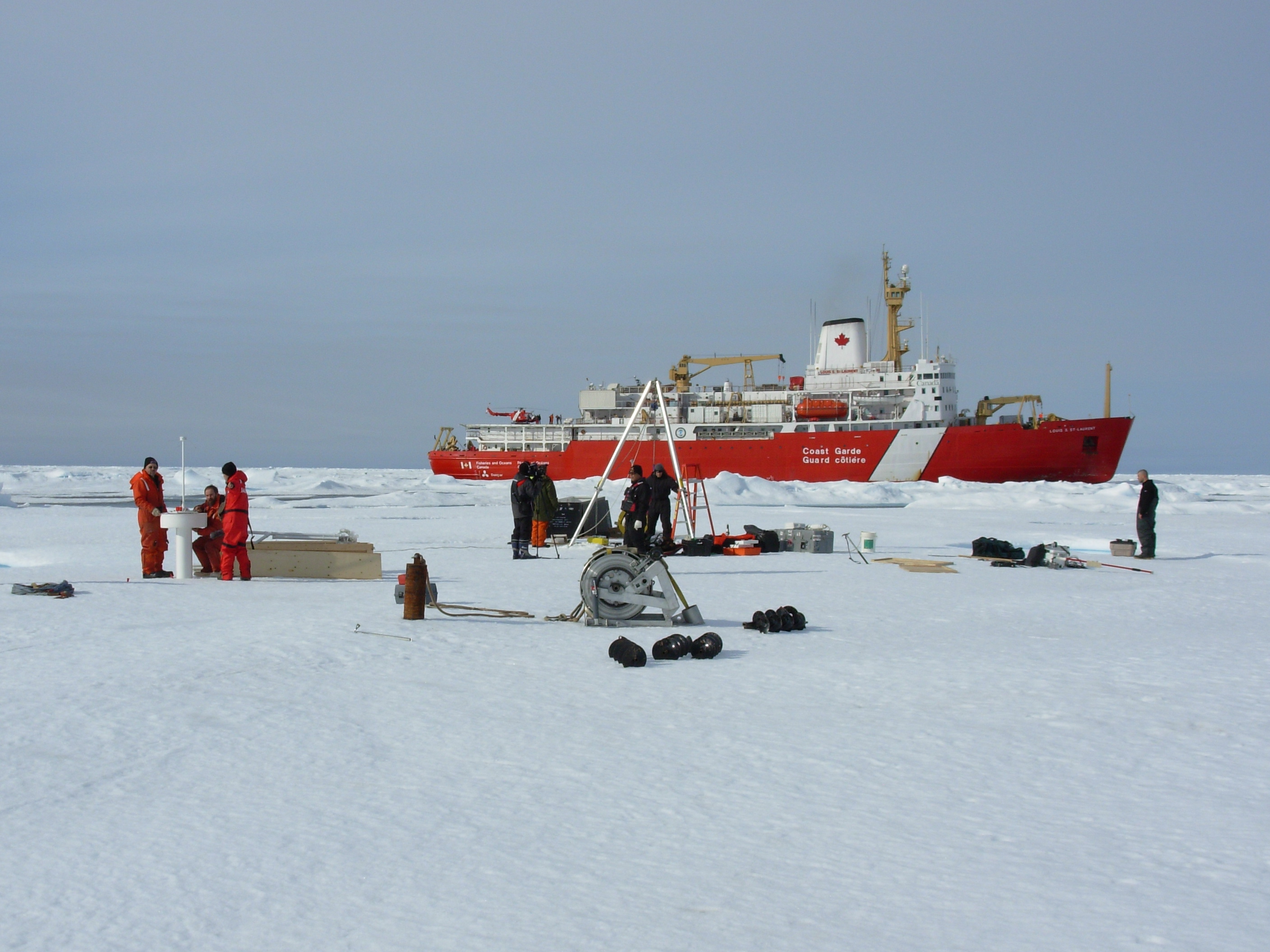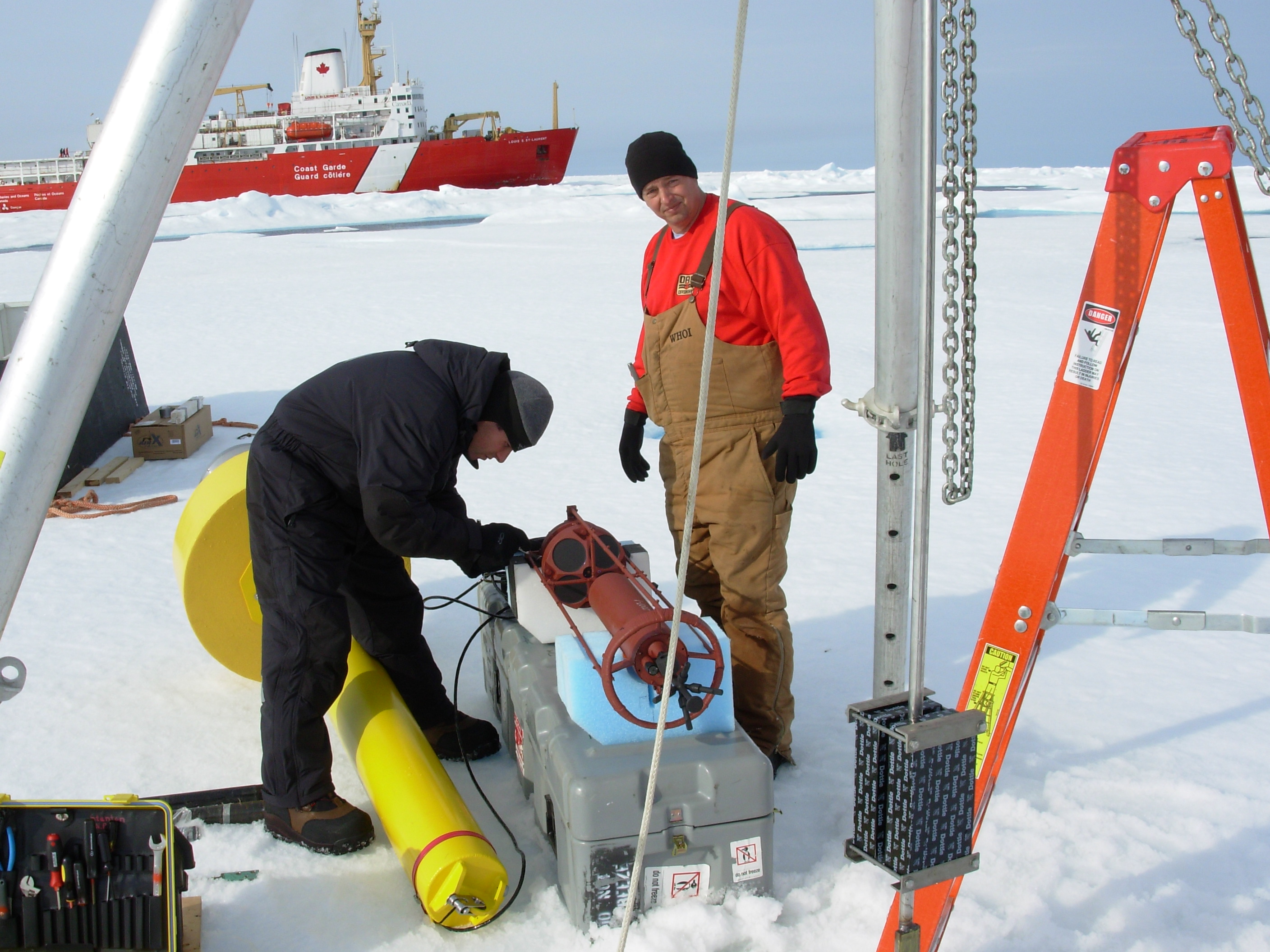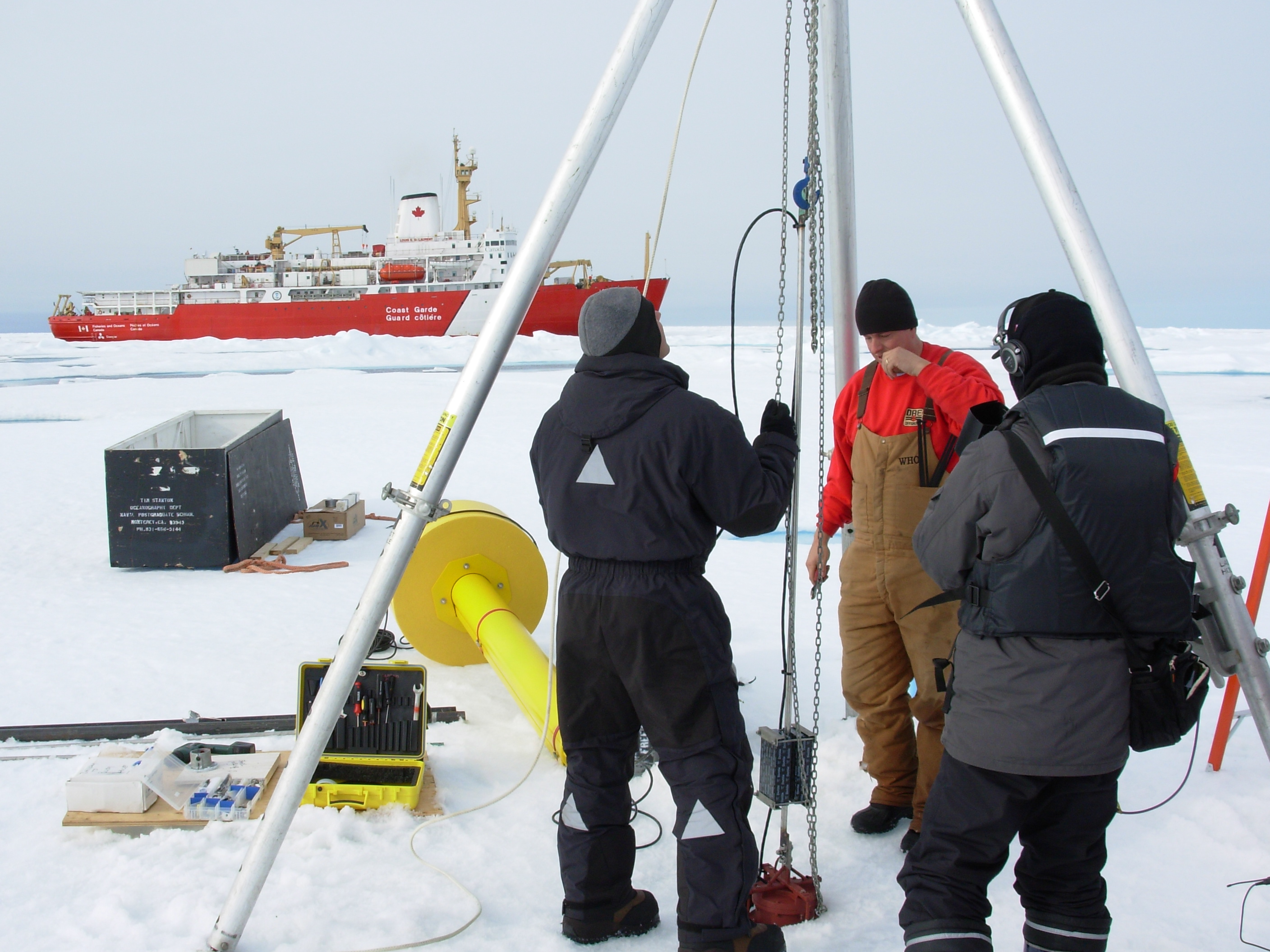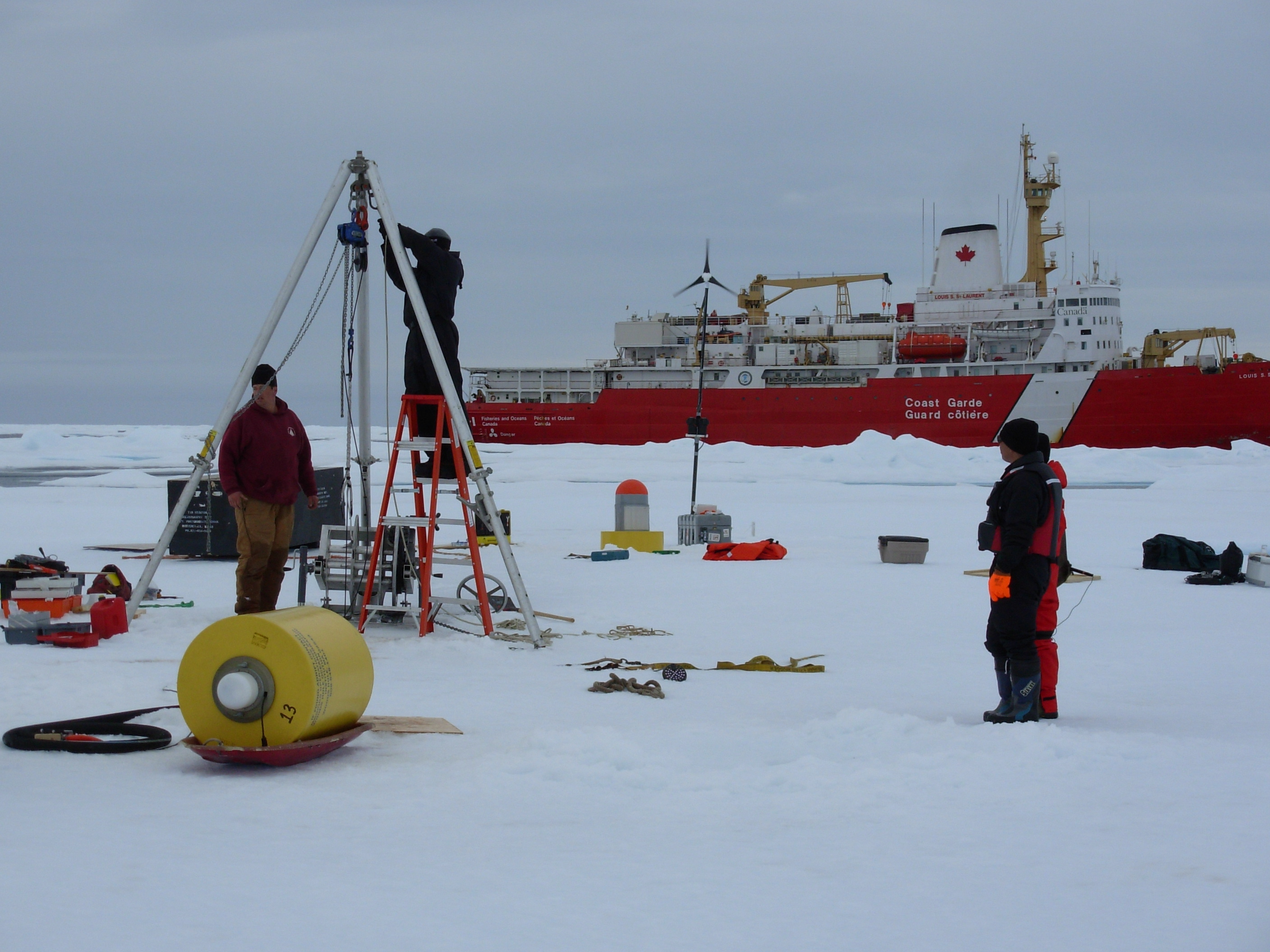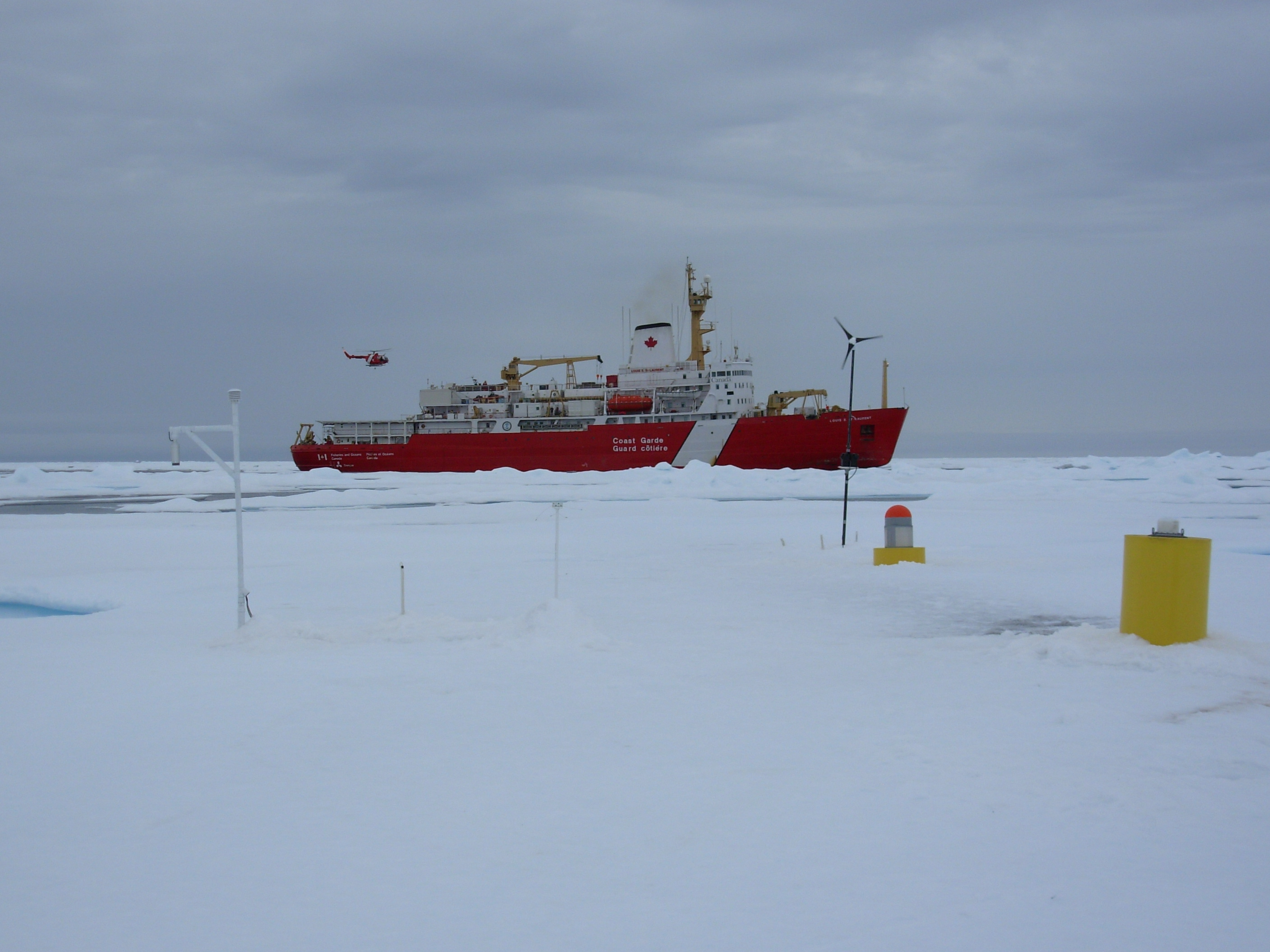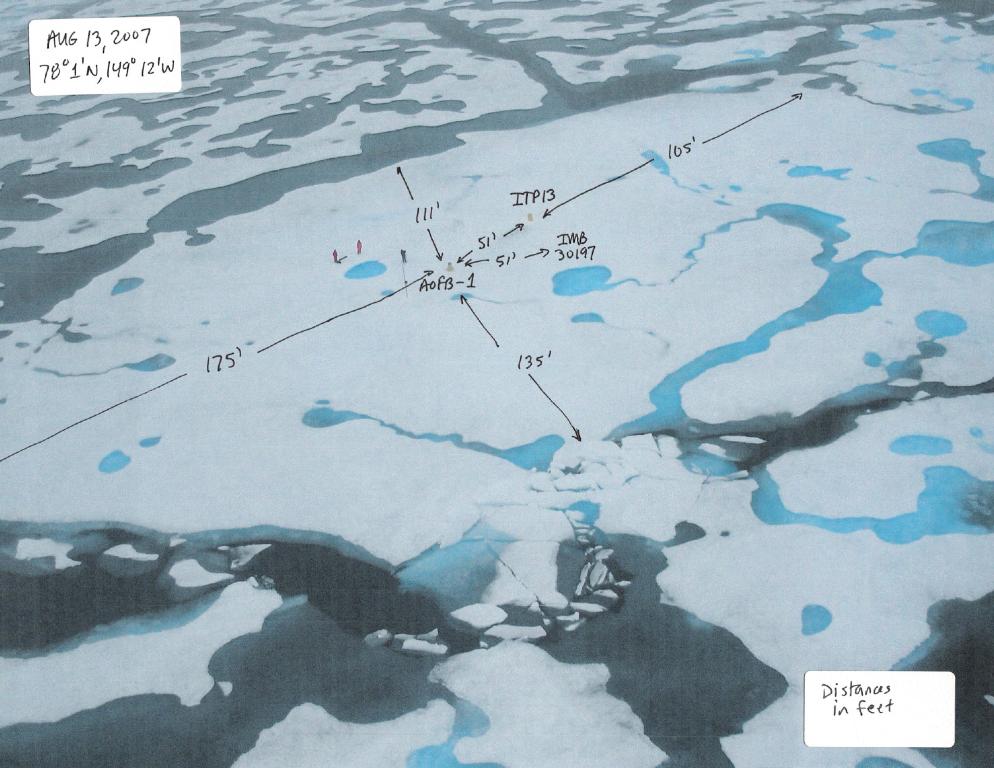ITP 13 Deployment Operations
On a clear summer morning, while setting out several drifters for scientists at UAF to monitor ice deformation, a suitable large 3 m thick multiyear floe for deploying our first Ice-Based Observatory in 2007 was spotted. Approximately 90-100 m long and 60-70 m wide, light blue melt ponds attested to the overall thickness. Freeboard measurements of the ice surface above the seawater surface measured 40-45 cm, confirming the sturdiness of this floe. This was an excellent site for an IBO especially considering everywhere around, thin melt-ridden ice occupied the region.
The conditions were excellent for the deployment on the ice: air temperatures were mild, and there was virtually no wind. Sunshine in the early afternoon, gave way to cloud cover later in the day. Beginning around 2 PM local time (UTC-6 hours), personnel and equipment were transported by helicopter to the floe. First a few quick 2" holes were drilled to survey the floe (between 2.85 and 3.2 m thick), then work began installing the Ice Mass Balance Buoy (IMB) by one team, while another team began augering an 11" diameter hole for deploying the Arctic Ocean Flux Buoy (AOFB). Meanwhile more personnel and equipment continued to be ferried onto the ice by the helicopter; the heaviest items (like ITP winch/wire and anchor) were conveyed using long slings.
In 2 hours, the AOFB was installed. The IMB was completed nearly 1 hour later, and the ITP package was deployed 20 minutes after that. Then the wind generator was attached to the AOFB to provide extra power for bursts of high frequency measurements, the floe was cleaned of deployment debris, and other ice coring and measurements were completed. By 20:30 local time the ice camp (nicknamed Zebra) was abandoned except for the installed IBO instrumentation (and a stray seal who poked his head out of the water near the floe), and everyone was back on the ship.
More information and photos on the deployment operation at Camp Zebra are also available at: https://www.whoi.edu/page.do?pid=67520.
